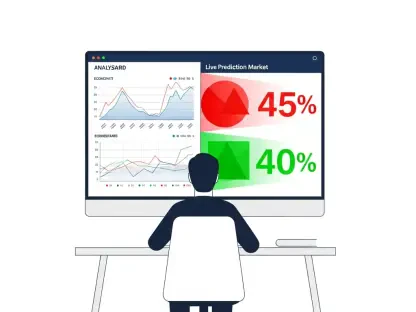In the financial services industry, digital transformation has swept across the globe with unrivaled speed and intensity, leaving an indelible mark on how consumers interact with their financial institutions. This whirlwind of technological advancement is reshaping the landscape of customer experiences and overhauling operational efficiencies. As businesses strive to stay competitive, digital tools have become indispensable for delivering personalized, convenient, and efficient banking solutions. This article delves into the vibrant world of digital financial tools, exploring key trends, extracting insights from industry leaders, and contemplating future implications for the sector.
Current Trends and Growth in Digital Financial Tools
Rise of Digital Solutions – Facts & Figures
Digital solutions have become a cornerstone of modern financial services, marked by exponential growth and widespread adoption. Recent data highlights a significant surge in the adoption rates of digital financial tools, driven by their ability to streamline services and enhance customer experiences. Reports indicate that banks and financial institutions are allocating billions toward these tools, confirming a broader industry move to leverage technology for strategic advantage. The financial sector’s digital transformation reflects an understanding of consumer demand for accessible and efficient financial services.
Real-World Applications and Innovations
The real-world applications of digital tools are both diverse and transformative. Key players such as Visa and Fidelity National Information Services (FIS) exemplify the successful implementation of innovative solutions in financial services. Their expanded partnership underscores the collaborative efforts to enhance value-added services for regional and community banks, enabling them to compete effectively with larger entities. Through tools like digital campaign managers, branded digital wallet integration, and sophisticated e-commerce fraud mitigation, these companies showcase practical applications driving the sector forward.
Expert Insights and Industry Perspectives
Insight into the digital transformation of financial services is enriched by the perspectives of industry experts and thought leaders. They emphasize the importance of digital tools in fostering competitive equality across financial institutions, highlighting how smaller banks can now offer services traditionally reserved for bigger players. These experts also underscore the critical role of fraud prevention amid rising security challenges. While digital transformation provides numerous benefits, it also presents hurdles, such as integrating new technologies with legacy systems and addressing cybersecurity threats.
Future Outlook and Implications
The future of digital tools in financial services promises continued innovation and integration. Prospective developments hint at further enhancements in customer personalization and operational efficiency. The anticipated evolution not only presents opportunities for growth but also brings foreseeable challenges, such as maintaining data privacy and keeping pace with rapid technological changes. As digital solutions permeate more deeply into financial services, they will undoubtedly ripple across various industries, potentially redefining standards and expectations in financial management practices.
Conclusion and Forward-Looking Perspective
In conclusion, the evolution of digital tools in financial services illustrates a profound shift toward more personalized, efficient, and integrated banking solutions. The strategic adoption of these tools by companies like Visa and FIS highlights their importance in fostering competitive parity and addressing modern financial challenges. The future beckons further innovation and adaptation, necessitating financial institutions to remain agile and proactive in embracing technological advancements. By doing so, they can harness the full potential of digital transformation to enhance customer satisfaction and drive industry growth.









